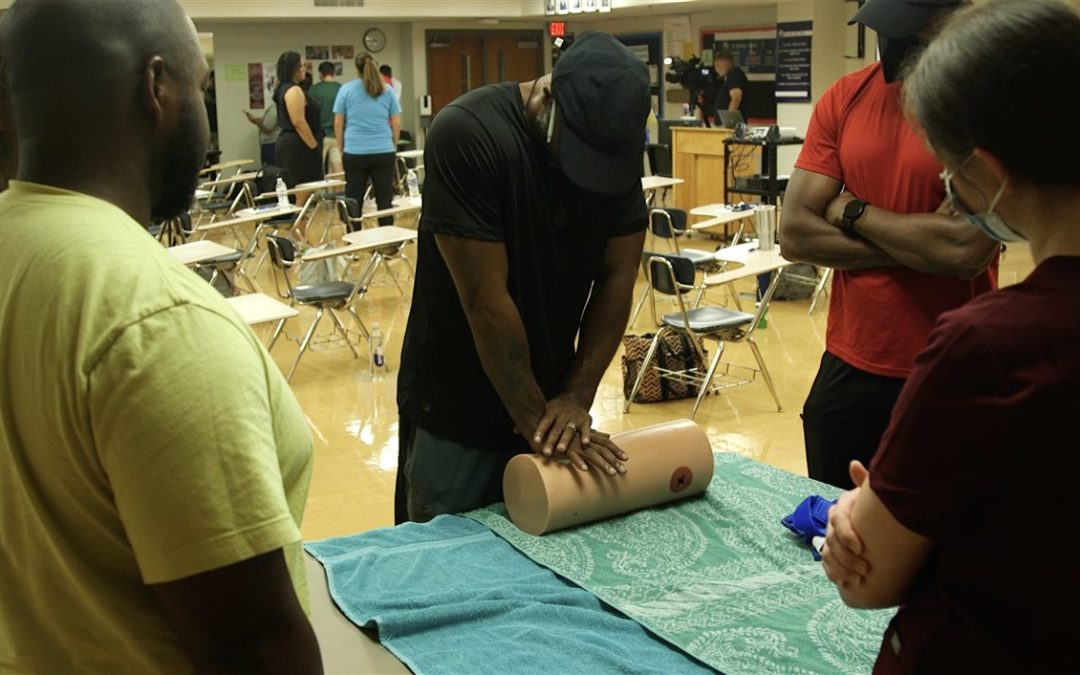(BPT) – By Kenji Inaba, MD, FACS, FRCSC
Injuries that cause severe bleeding can happen at any time and anywhere — in your kitchen, at work or from a car accident. And without quick intervention, these severe injuries can cause death from blood loss within minutes. The good news is that anyone can step in to help save a life with the simple lessons learned in STOP THE BLEED® training from the American College of Surgeons.
The early minutes after an injury are critical. Every second matters. As a trauma surgeon, I have seen lives saved because someone — including members of the public — was able to step in to stop bleeding. Unfortunately, I have also seen patients succumb to their injuries from blood loss. In fact, studies show that uncontrolled bleeding from trauma is a major cause of preventable death for all ages.
Recognizing the power that everyone has to help prevent bleeding deaths, the American College of Surgeons Committee on Trauma led the development of the STOP THE BLEED® program nearly a decade ago. Through a short class and hands-on training, the program informs, empowers and educates any individual to help control bleeding injuries until help arrives. More than 2.6 million people around the world have been trained to learn these basic life-saving skills, and this number is growing every day.
Our goal is to make life-saving bleeding control techniques as accessible and as common as CPR training and other first aid techniques. May is National STOP THE BLEED® Month, so it’s the perfect time to take action so that you can learn to save a life.
Be prepared: Injuries that cause severe bleeding can occur at any time, anywhere, and to anyone. As summer begins, we often see more injuries as we all engage in more outdoor activities.
Not that long ago, after an injury, bystanders would call 911 and wait at the scene until first responders arrived. However, decades of research in trauma care have taught us that the intervening period between the 911 call and Emergency Medical Services (EMS) arrival can be quite long, and during this critical time, untreated patients can bleed to death.
While there is no way of predicting when these incidents may occur, we now know that a bystander who is trained in STOP THE BLEED® can not only initiate a 911 call but can also intervene and save a life.
Training is for everyone: STOP THE BLEED® training is for non-medical professionals: moms, dads, sons, daughters, office and non-office workers, teachers — really anyone with or without formal medical training. Many of the techniques are similar to what I teach the resident physicians on my trauma team, but we have customized the training into three basic steps that are easy to learn and remember.
Training is short and has lifelong benefits: All STOP THE BLEED® courses are not-for-profit and are free to attend or cost only a small fee. Through hands-on training, the course teaches and empowers students to recognize a life-threatening bleeding injury and safely intervene. First, we encourage everyone to call 911 and ensure that the scene is safe. When that is done, we teach three simple steps that can be performed before first responders arrive:
- Apply direct pressure to the wound
- Pack the wound with gauze
- If required, apply a tourniquet
Training takes about an hour to complete — shorter than the length of most movies — and courses are available in-person or online. These techniques are simple, but they can truly make a difference when someone experiences a severe bleeding injury. If we all learned proper bleeding control techniques, countless lives could be saved. Maybe even your own.
To learn more about STOP THE BLEED® and find available courses, visit stopthebleed.org.
Kenji Inaba, MD, FACS, FRCSC, is Chair of the STOP THE BLEED® Committee of the American College of Surgeons Committee on Trauma and the Chief of Trauma at Keck Medicine of the University of Southern California.





